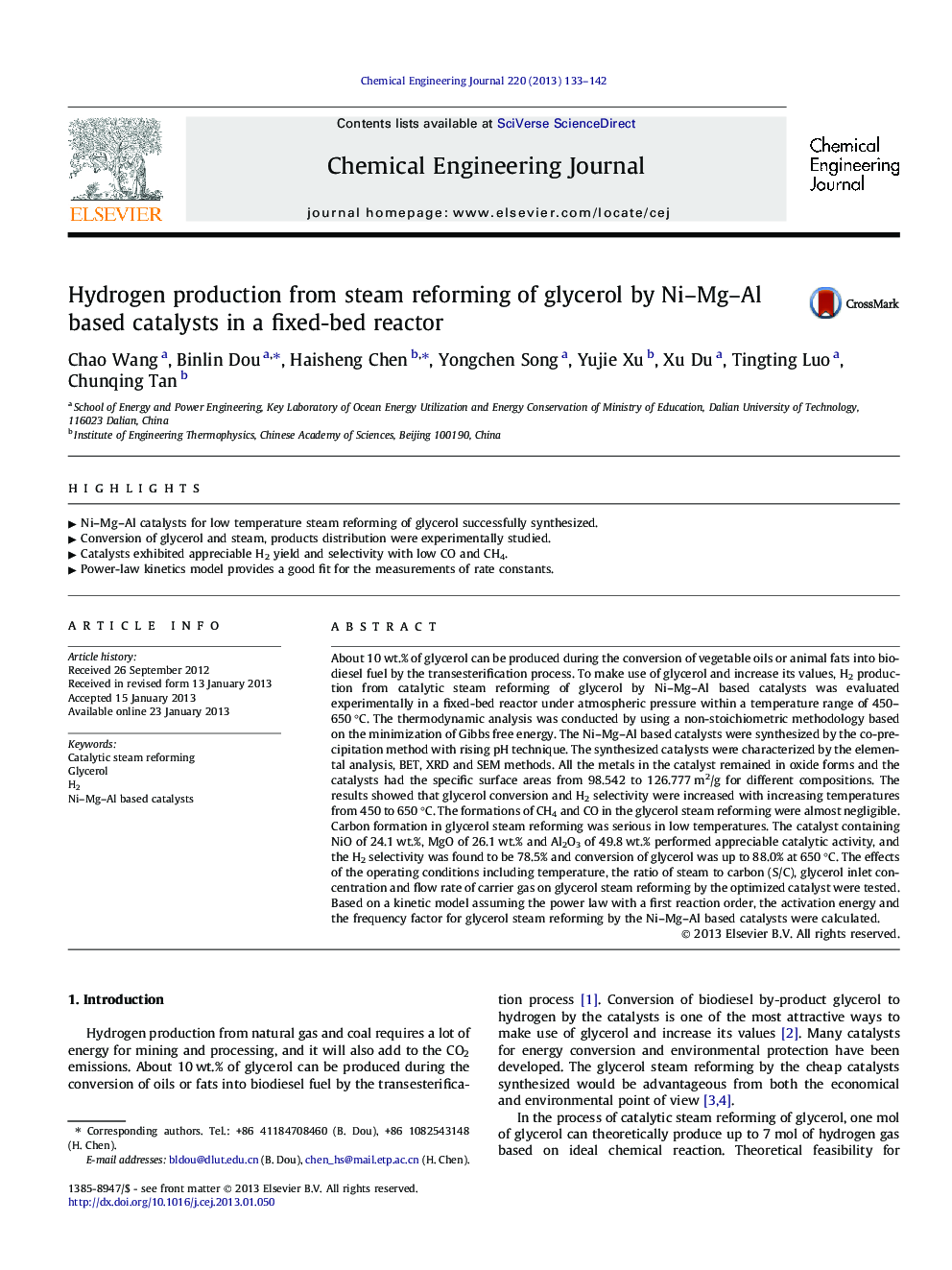| Article ID | Journal | Published Year | Pages | File Type |
|---|---|---|---|---|
| 148644 | Chemical Engineering Journal | 2013 | 10 Pages |
About 10 wt.% of glycerol can be produced during the conversion of vegetable oils or animal fats into biodiesel fuel by the transesterification process. To make use of glycerol and increase its values, H2 production from catalytic steam reforming of glycerol by Ni–Mg–Al based catalysts was evaluated experimentally in a fixed-bed reactor under atmospheric pressure within a temperature range of 450–650 °C. The thermodynamic analysis was conducted by using a non-stoichiometric methodology based on the minimization of Gibbs free energy. The Ni–Mg–Al based catalysts were synthesized by the co-precipitation method with rising pH technique. The synthesized catalysts were characterized by the elemental analysis, BET, XRD and SEM methods. All the metals in the catalyst remained in oxide forms and the catalysts had the specific surface areas from 98.542 to 126.777 m2/g for different compositions. The results showed that glycerol conversion and H2 selectivity were increased with increasing temperatures from 450 to 650 °C. The formations of CH4 and CO in the glycerol steam reforming were almost negligible. Carbon formation in glycerol steam reforming was serious in low temperatures. The catalyst containing NiO of 24.1 wt.%, MgO of 26.1 wt.% and Al2O3 of 49.8 wt.% performed appreciable catalytic activity, and the H2 selectivity was found to be 78.5% and conversion of glycerol was up to 88.0% at 650 °C. The effects of the operating conditions including temperature, the ratio of steam to carbon (S/C), glycerol inlet concentration and flow rate of carrier gas on glycerol steam reforming by the optimized catalyst were tested. Based on a kinetic model assuming the power law with a first reaction order, the activation energy and the frequency factor for glycerol steam reforming by the Ni–Mg–Al based catalysts were calculated.
► Ni–Mg–Al catalysts for low temperature steam reforming of glycerol successfully synthesized. ► Conversion of glycerol and steam, products distribution were experimentally studied. ► Catalysts exhibited appreciable H2 yield and selectivity with low CO and CH4. ► Power-law kinetics model provides a good fit for the measurements of rate constants.
